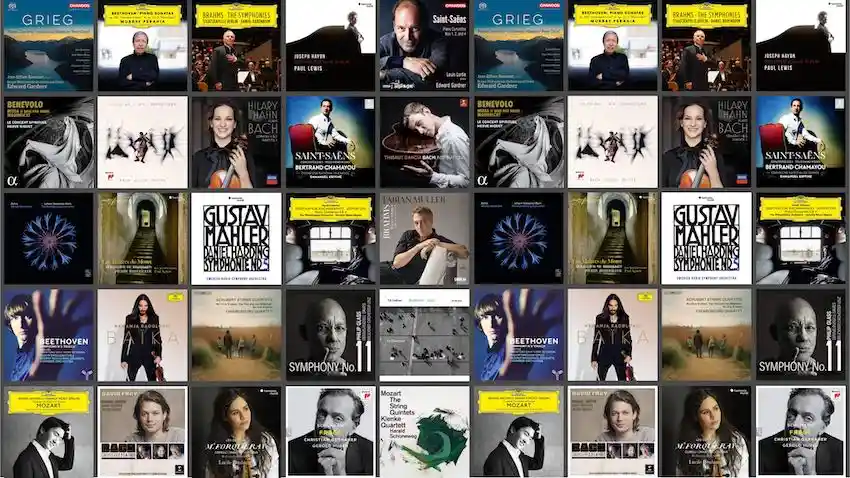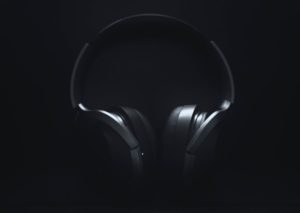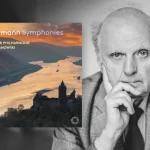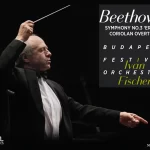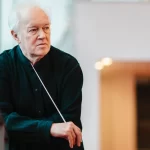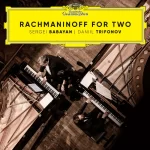We continue our “Best Of Classical Music Guides“, in this case dedicated to Bach’s Goldberg Variations, this time choosing the best recordings played on the piano. See below the previous parts (Part I, Part II).
Part 3 – The Piano
Playing Bach’s Goldberg Variations on the piano exhibits enormous challenges; It seems that the additional possibilities this instrument has over the Harpsichord can even be considered an obstacle, rather than an advantage. As covered in the first part of this guide, Bach left very little instructions regarding tempo and phrasing in the score, so they are left to the discretion of the performer. But on the piano, a crucial element is missing – the double keyboard instructions. As we’ve seen in the second part, which recommends the best recording of Bach’s Goldberg Variations on the Harpsichord, in some variations Bach instructed the performer to use two manuals (i.e. two keyboards) of the instrument, and on others the performer can double the notes by activating this mechanism on a suitable instrument, playing on one keyboard but operating both keyboards on the same time. An obvious solution is to play some elements on the piano as Forte, and others Pianissimo, but that still doesn’t fully do justice to the intention of the composer. In addition, Baroque ornaments which sound suitable or even “natural” on the Harpsichord, can be either less effective on the piano, or disruptive to the musical phrases. Some pianists have handled these difficulties masterfully, while others were less successful.
Rudolf Serkin made a piano roll take on the variations, and it was later adapted to modern pianos and recorded as an original performance. It may show us some musical intents from this well-respected pianist, but it’s hardly a full image of how Serkin might have performed the piece.
The first real, full piano version of the Goldberg Variations was probably made by the great Chilean pianist, Claudio Arrau in 1942. Luckily, the latest evolution of the classical music streaming services has brought it back to the catalog. On first listening, it’s rather surprising how “modern” this performance sounds. There are some hints of 19th-century romanticism that can be heard in other early Bach studio recordings, and consistent tempo choices that make the performance flow from start to finish. All of the Arrau hallmarks are omnipresent, including his sometimes rigid handling of fast-paced elements, or his tendency to get slow and heavy as a device to emphasize “depth of feeling”. This is an impressive document, and the mono recording is rather good for its age.
Another pioneering Goldberg Variations recording was made in the same period by Eunice Norton, as well as some other attempts by this less-known American pianist. It’s a fine performance, but relatively hard to come by. It sometimes becomes available on YouTube, if you’re curious.
Here Comes The Canadian Superstar
But let us talk about the big grand piano in the room – Glenn Gould.
Gould’s 1955 mono recording of the variations brought it back to fashion, being a huge commercial success and brought fame to the Canadian which lasted till the end of his short life. It’s one of the iconic records in the history of classical music recordings and should be in every collection.
But judging Gould’s performance solely on musical grounds, it’s not necessarily one of the best Goldberg Variations versions. As most (if not all) of Gould’s recordings, there are intentional oddities, some of which plain nonsensical, including unnatural phrasing, inflation of staccatos and excessively fast or slow tempo choices. The entire performance seems rushed, not giving the music time to breath or make an impression by itself (Gould’s decision not to play a single repeat adds to this). Still, you can’t deny the charm and excitement this 1955 recording project. The original rather dry and low in dynamic range recording has been re-engineered and remastered numerous times, including re-recording it on a new piano (Zemph), circumstancing a stereo version of it or remastering an original copy of the commercial LP (Naxos). Sony Music’s latest remastering from 2013 sounds the best for my ears, and it includes Gould’s later take on the piece (1981).
Gould’s digital 1981 version is also fascinating from start to finish, and like his 1955 mono recording, should be in any record collection. The approach here is different, almost ideological in the consistency of rhythm from first note to the last. This makes for a very consistent listening experience, but yet again brings some oddities of tempo choices. Gould does select some variations to repeat when he has something new to say the second time over (which is how it should be). His Bach remains a bit enigmatic, for better and for worse, and his stapled sing-along may be a big distractor from the performance. The pianist recorded the piece in a short period of time and then edited it in the studio for few months. The result is fascinating, still steers controversies and demands to be heard.
Rosalyn Turuck, another great Bach pioneer, recorded the Goldberg Variations many times over, on piano and Harpsichord, live and in the studio. She has her own group of admirers and giving her distinguished scholarly and pianistic career it’s viably justified. Her style, however, hasn’t met the test of time well, taking into account the knowledge of Bach performances we have from past decades. Truck obviously looks at the Goldberg Variations as a mammoth of a musical piece, in the scale of the St. Mathew Passion or the B Minor Mass. And this is projected not only through the broad tempi she adopts. There’s a certain heaviness in her playing, along with a didactic directness, making us aware of every interpretational decision and ornamentation (The last of which she was a true academic expert).
Unfortunately, there is no single definitive version of the Goldberg Variations as played by Tureck, as each has its pros and cons. Her 1957 Abby Road Studio mono recording finds her at her most slow and articulated. A later 80’s recording on the VAI label probably finds her at her absolute best, relatively free and flowing, but she is let down by an amateurish recording made on a private concert. Her later, digital recording on Deutsche Gramopphon (1999) sounds the best technically, but Tureck in her mid-eighties lacks the focus and technical command of her younger self. Some other live performances exist out there, and a Truck fan should choose his or her favorite after a thorough listening.
Late 60’s Wave
What is most special about Willhelm Kempff’s recording (DG, 1969), is that he is determined to strip the score from any ornament, leaving the bare-minimum of the music (Listen to the aria – You’re in for a shock). He also, for some reason, chooses to repeat only the first part of most of the variations, playing a single take on the second part. However, you can’t deny a great artist is at work, and Kempff’s unmistakable sound and authority are clearly projected in this recording. With all of its oddities, it’s a great version.
Charles Rosen’s version (Sony, 1969) is effective, calm, assured, maybe too “ordinary” and lacking in memorable moments. This is another severe, serious version, but one which is much more flowing and natural than Tureck.
This period also saw a recording by Maria Yudina (Melodia, 1968) – a fascinating document and a worth-while listening if you’d like to get to know this unique artist, often referred to as “the Russian Glenn Gould”. But it can hardly be considered as one of the best versions.
Tatiana Nikolaiva’s first recorded the piece in the late 70’s for the Melodia label, one of few live and studio recordings by this great Russian artist. The availability of some of these recordings is somewhat problematic, so it was difficult to recommend the best version for Nokolaiva’s admirers. The ones that are available, show Nikolayeva as mesmerizing romantic Bach player, which, although not to all tastes, can be utterly enjoyable.
Rare Yet Significant
Despite the Boom of harpsichord recordings in the 80’s and the hype of the late Gould version, recording the piece of on the piano was still a rare occasion.
András Schiff’s first recording of the piece for Decca (1983) still sounds unique; Schiff has his own sound and way of playing Bach (and other composers). One can describe his way of playing musical phrases as “declaratory”, or, as Schiff likes to call it, “Parlando” – In a speaking manner. He doesn’t try to imitate the Harpsichord and his account is pianistic in the best sense. This earlier version already displays him as a true individual artist, fascinatingly ornamenting the repeats and projecting a clear vision of the piece as a whole, while mastering the tiniest contrapuntal elements (See variation 4 as an example of a masterful contrapunct performance). There are some oddities Schiff explored in these years, including changes in registers that sound a bit comical (Var. 7). Schiff continued to record the complete keyboard repertoire for Decca over the next few years, but this Goldberg Variations still remains one of the highlights of the cycle.
Almost 20 years gone by, with full Bach, Mozart and Schubert cycles under his belt, and Schiff re-recorded the piece for ECM, in an outstanding version taken live from Basel. There is much more maturity in this version, without scarifying one bit of the spontaneity and true wonder and fascination of the piece. The sustaining pedal is almost entirely dispensed with, using the acoustic of the hall as a tool for a cantabile sound. This brings much more clarity to the contrapunct writing and to the playful ornaments in the repeats – This time even more daring than the Decca version. In addition, technically speaking this is one of the best versions from a recording quality standpoint.
Schiff’s way with Bach is not of sacred robustness; The virtuosity and dancing elements are thoroughly explored while preserving a true sense of the whole. The only question is whether the listener will be taken by Schiff declaratory phrasing. Many will, others won’t.
Also from the same period, we have some unfortunate version by a great artist that is clearly out of his element, even on his second attempt at the piece. Alexis Weissenberg (1981, EMI-Warner) plays the Goldberg Variations in what can only be described as unequipped to handle Bach’s style, with changes of tempos, awkward ornamentation, exaggerated dynamic and heavy-handed sound. He also hurries up with the end of every variation. This performance is lacking any resemblance of his great talent which comes across on many other fine recordings.
Maria Tipo’s take on the variations from the late 80’s (EMI-Warner) is commendable, with some nice voice coloring and intricate pedal work. However, she decides for some reason to repeat only the first part of the Aria and all of the variations and there is a hint of anachronism when Tipo doubles the basses, sounding like a Busoni adaptation of the piece.
Daniel Barenboim’s live Goldberg Variations (1989, Teldec) is full of wisdom and some nice individual touches, very reminiscent of his early Beethoven Piano Sonatas cycle for EMI. This includes debatable tempo and dynamic choices. All the repeats are observed, with changes mainly to do with dynamics and bringing off hidden voices to the forefront. Barenboim approach treats each variation as an almost separate entity, including long pauses between the variations. It’s an interesting, well (if closely) recorded version, but not a first choice.
Get periodic updates about new classical music albums reviews, news and guides.
We respect your privacy.
Andrew Rangell newly re-released version of the Goldberg Variations for the Steinway & Sons label is so idiosyncratic, almost outrageous, that you have to listen to it. It will maybe make you rattled, smile or upset, but it’s certainly never dull.
Another version for courageous listeners is by Vladimir Feltsman, who’s extravagant account takes one too many steps of making the variations “interesting” at any cost. There is too much octave doubling, registers changes and non-legato, Gould-like phrasing, though without the Canadian mastermind behind it.
Goldberg On A Budget
In the early years of the Naxos label, it was snobbishly treated by the established music outlets and part of the classical music enthusiasts. This was mainly because of the insistence of the label to keep a budget price, hiring lesser-known artists from Eastern Europe and Asia and sacrificing artwork and high-cost promotional practices. This may be one reason that Pi-hsien Chen’s impressive version (1988) hasn’t been given a proper attention. For the super-budget price it was once offered, it presented a remarkable value – An assured, well recorded and technically commanding performance, with some nice individual touches. There is a very attractive rhythmic consistency, which perhaps somewhat paradoxically makes the quieter, slower variations (Such as Var. 21 and 25) especially moving. On the other hand, there’s a little “middle of the road” feel here, with many of the repeats (only a few are observed) not exploring anything new. Some of the ornaments are missing in historical awareness, with trills played before the bit. Rather disappointingly, Chen rerecording of the piece in the more up-to-date Teldec Studio in Berlin (2001) took the other opposite in regards to repeats, ornamentation and exploratory territory, and the results are forced and unnatural.
On the same label, we have the immaculate Jenő Jandó, who recorded to the label practically all of the major piano repertoire. Jandó’s version of the Well-Tempered Klavier Book 2 which came out some years before his Goldbergs was a great surprise, presenting him as a direct, assured Bach player. His Goldberg Variations, unfortunately, do not reach the same artistic level.
The “Sleeper” Version
Listening blindly to Ekaterina Derzhavina’s account (1994), you’d think you are in the company of a truly great Bach performer. Her performance is touching in it’s naive, unassuming and modest approach. Never excessive, it’s a simplified playing that manages to move the listener with its purity. The long journey with the variations (she observes all the repeats) is sustained with a wonderful singing tone and little, appropriate ornamentations. There is also some emotional intensity when called for, such as in variation 21, and tender flexibility in the “black pearl” variation, No. 25. The only drawback is the rather dry recording, but with such high an artistic quality you soon forget it. After a long absence from the recording studio, Derzhavina releases new recordings on the German Hänssler label, with recent albums of Bach’s French suites and Medtner solo and chamber works very nicely done indeed. Maybe she would treat us with a new, better-recorded version of the Goldbergs some day. Until then, this is a much enjoyable and impressive version.
Well Planned, Spontaneously Executed
Derzhavina’s countryman Andrei Gavrilov recorded the piece for Deutsche Grammophon in 1994. Gavrilov is a truly fascinating pianist, using all of the tools of his disposals to illuminate this masterpiece. There are some impressive technical examples (Var. 5) some nice voicing of the ornaments (Val. 7) and a true cantabile playing (Var. 9). But there are some missteps as well, such as what sounds like a wrong tempo choice for some of the variations, just in order to keep a rhythmic unity, such as the hectic Var. 13 or the sluggish Var. 15 and 21. The “black pearl” is one of the longest on record, losing most of the momentum built before. A worthy listening, then, not one of the best.
Angela Hewitt first recording (1999) is very attractive with its clarity, beauty of tone and wise tempo choices. She appears to observe all the best qualities of Bach performers from the past (some are mentioned above) while having her own unique voice. Her treatment of the repeats are still rather controversial; She opts for changes in phrasing, voicing and dynamics rather than a brilliant ornament. She is also unapologetically pianistic, incorporating noticeable crescendos and diminuendos, not available on instruments in Bach’s time, though her usage of the sustaining pedal is spare. The main downside of this release is a little lack of spontaneity; Everything sounds well planned and executed, even when Hewitt breaks from the original written text. Hear as an example variations 15 and 20; If we compare this point to Schiff, he is at his absolute best here, giving emotional intensity without sounding exaggerated. Hewitt is well mannered, well prepared, but fail to make a real impression.
In 2015 Hewitt rerecorded the piece for Hyperion. Like her other second takes for the British label (Namely the Well-Tempered Klavier), there is a sense of freer movement and additional purpose to the performances. Part of it can be attributed to her own instrument, a well defined, evenly tuned Fazioli 308 piano. All of the original recording’s qualities are here, and it is still a well-planned performance to a fault, but there are some extra pronouncement of the musical ideas and a better recording. Hewitt clearly sees the “black pearl” variation as an emotional highlight of the piece, and here her intent is much better projected than the early recording. Unfortunately, as always with Hewitt and other Hyperion artists, you will have to purchase the physical CD or a direct download, as the label does not agree to stream their catalog for financial reasons. For Hewitt admirers, then, the second version on Hyperion is the way to go. If you are willing to pay the price, that is.
Evgeny Koroliov starts the Goldberg Variations in a rather dull manner, but the performance really takes off in the first half of the set. Regrettably, his handling of the repeats is sometimes intrusive, and the performance loses the momentum in the second half. The recording quality, though tolerable, is not ideal. Koroliov singing-along is not totally unique, but his performance does not compensate for the annoyance.
Then came Murray Perahia, with his Gramophone Award-winning performance for Sony (2000). Like many great performances, it’s hard to explain how the artist actually achieves what he does, or hearing the piece played in any other way. Maybe this: there is a sense of exploration, traveling through all the intricacies of the human experience. There is a sense of direction, moving from the outgoing first variations to the more reflective late ones. The transition from the masterfully played 25th variation to the 26th can only be described as a sense of resurrection.
This version of the Goldbergs seems to have everything – spirituality, technical command, a real sense of structure and harmonic tension, carefully observed voice leading and a dash of playfulness. The only slight annoyance in this recording is what seems to be fingernails hitting the keys in the early variations (most noticeable in Variation 3).
Perahia continued to record many other Bach records for Sony, and then to Deutsche Grammophon, but he has never done better. It’s one of the greatest recordings Perahia made, or for that matter, one of the best Bach recordings on the piano. It should be in every collection for a lifetime of enjoyment.
Getting Serious, Remaining Playful
It’s better to ignore the “Cinderella” tale of Simone Dinnerstein’s release – Referring to a self-made recording that was picked up by a major label – So we can listen to the performance with fresh ears. And it’s a fine version. Dinnrestein’s way with Bach is mellow, reflective, quiet, almost meditative. This version stands out due to the consistency of its approach. Though it won’t win every listener, to me it’s very persuasive. You may find that Dennerstein requires several listenings to fully appreciate the tiny intricacies of her sound-world. It’s one of those releases that requires patience, and it’s worthy of yours.
Joanna MacGregor restless version has one really memorable moment – The Aria De Capo at the end, where the last variation continues to echo, breaking into what should be a clean start of the last chapter. It’s a brilliant idea and that is brilliantly executed, but unfortunately, there is little to be persuaded by in the 70 minutes of music that proceeds it. It’s a very energetic, almost jazzy version, but MacGregor sometimes can’t technically keep up with her own tempo choices.
If what you are looking for is improvisatory, heavily ornamented Bach, look no further than Andrea Bacchetti (2012). Although he is not ideally recorded, his handling of repeats will never cease to put a smile on your face (It may also allow you to ignore the mediocre recording quality and instrument). It can easily be compared to another outlandish account of the repeats – mentioned in the previous part when deceasing Igor Kipnis’ version on the Harpsichord.
Zhu Xiao-Mei has many admirers worldwide, partially because of her unique biography and documentaries made of her life. Her two versions of the Goldbergs I find somewhat cold and indifferent. She recorded much more Bach in the past two decades, and in some of these releases, she is most definitely more impressive.
Listening to Nicholas Angelich, there is never a doubt about his technical command of the piece and the instrument. From an interpretative standpoint you can argue against his decision to incorporate too much of pianissimo to an almost inaudible effect (Val. 15), or his overall rhythmic stiffness (Val. 4). In general, it’s a well recorded, serious version that has less of a chance to jell into memory.
You can never fault Jeremy Denk for his originality and clear-thinking, but what worked so well for the American pianist in other releases does not necessarily sounds fully formed here; The repeats are interesting, but some fluctuation of tempo, highly contrasted dynamics and 19th century-like pianistic style and plain rush on certain variations will not speak to all tastes. The highlights of this version include the minor, slow variations (try var. 15 & 25), or the little humorous touches Denk incorporates, such as in Var. 20. The liner notes in the physical CD and the added explanation videos by Denk (bonus DVD or video files in the Apple Music version) – are delightful. Highly interesting and enjoyable, maybe as a second or third version once you already know the piece.
Lars Vogt Ondine release (2015) is reserved, unassuming (in a good sense) and very pleasant. In some variations, you sometimes feel as if you are in the midst of a lullaby. The relatively slower tempi, which sounded so well and refreshing in the Richard Egarr version on the harpsichord, sounds heavy and mannered here. Overall, a well executed and recorded version, but a bit pale next to the extreme competition.
Lori Sims presents a “live” version in all sense of the word; There is a lot of spontaneity, extra excitement, obvious audience noise and, let’s admit it, some missteps that would have been corrected in studio conditions. It’s clear from the performance how much joy Sims gets from playing the piece, and we are generally lucky to be shared with that joy. Having said that, she is not the most imaginative in repeats (though they are interesting), her left hand is sometimes too prominent and heavy handled, and the recording quality is not at the same standard as others.
Igor Levit’s recording was released as part of his much-praised 3 variations set, which included, besides the Goldbergs, Beethoven’s Diabelli Variations and Rzewski’s “The People United Will Never Be Defeated!”. It’s now sold separately by Sony and can be appreciated solely on its own.
Levit has the sound world of Perahia when playing Bach – He will always opt for the singing line than the clarity of the contrapunct, so obsessively observed on some performances. There is a calm naturalness to his playing, as was so impressive in his release of the complete Partitas in 2014. He is a judged pianist, assured yet humble. His ornaments in repeats sound just right and never excessive, and he also enjoys Sony’s best engineering services. Levit also finds the right balance between a full continuous rhythm and a small breathing space for each variation. A right balance between playfulness and serenity. There is really very little to fault with this performance; Levit has the disadvantage of coming into the light well after so many distinguished releases, that it’s hard for him to stand out from the crowd. A great version that no one will regret purchasing or listening to.
But some do manage to stand out from the crowd. Alexandre Tharaud’s version is arguably the most impressive, moving and fascinating version since Perahia and Schiff’s – A truly unique voice in a crowded field of hundreds of recordings, on both harpsichord and piano. Tharaud is more internal, introspective artist, as if asking you to get closer to the music with him holding your hand, rather than be an outsider spectator. It’s a voice that penetrates deeply, while never being an extrovert. Tharaud’s keyboard control is a source of wonder, changing colors and projecting lights and shades like very few pianists. Like Hewitt, he is never shy of using all the possibilities of the modern grand piano, but there is also a sense that it’s done only at the service of a musical idea (hear the “overture” variation No. 16 as an example). The same applies to the added ornaments in repeats – hear how well suited and appropriate they sound on var. 4 and elsewhere.
Compared to other versions, Tharaud is less inclined to walk the extra mile to emphasize some internal jokes and humor, and it’s indeed a very “serious” version. Again, this is one of the most impressive Goldberg Variations in the current catalog, and even if you are looking for a more “jubilance” experience, Tharaud is too talented to ignore.
Listening to Beatrice Rana’s quite recent release, the word “refreshing” is the first to come to mind. She keeps the tempo tight up except for some dramatic, strategically planned pauses like before the “black pearl” variation. Her handling of repeats has more to do with bringing out hidden voices than adding more notes, and she is at her best on the slower, mellow variation (Var. 15 is the highlight of the performance). It’s most definitely a different voice among the latest versions, and even if not one of the absolute best, it’s highly recommendable.
The Choices
As with the Harpsichord of this guide to the best recordings of the Goldberg Variations, I decided to recommend 3 versions; two of which I feel present as big a scope of the piece, exploiting the full potential of it and illuminating all of this still difficult to crack masterpiece. I also decided to recommend a “Sleeper version” that may have missed the eye of the criticism or the public.
For me, Murray Perahia’s version will probably remain not only one of the best versions of the Goldberg ever recorded, but also one of Perahia’s best and a landmark piano recording. It’s that good. It should be in any respectable classical music collection.
András Schiff’s second version for ECM is so engaging, so fulfilling that one can’t avoid recommending it in any collection as well. Schiff has a lifelong experience with the Goldberg Variations yet it’s marvelous how live and spontaneous it still sounds.
Before moving to the “sleeper” recommendation, there cannot be an overview of the Goldberg Variations without an honorable mentioning of Alexandre Tharaud’s more recent survey, already gushed over earlier in this guide. It’s right up there with Perahia and other distinguished versions from the past, and can’t be overlooked.
For the “sleeper” choice, Ekaterina Dershavina version is surprising with its effectiveness, without the pianist appearing to do large gestures or employing big dramatic gestures (isn’t that a mark of a great artist?). It’s a shame it didn’t get the attention it deserved at the time of its release, a mistake this guide may be able to fix.
The Recommended Piano Versions:
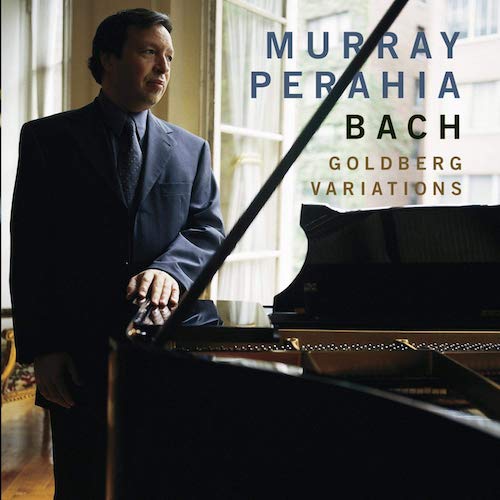
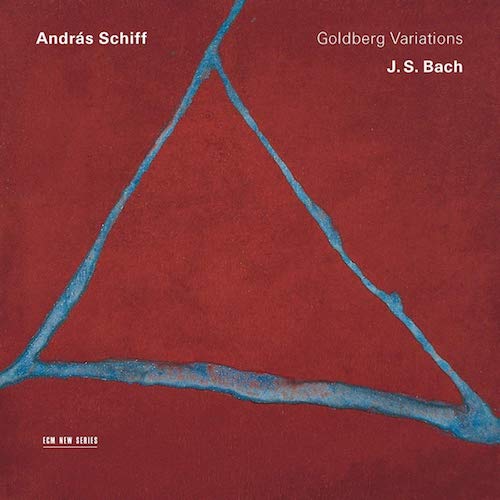
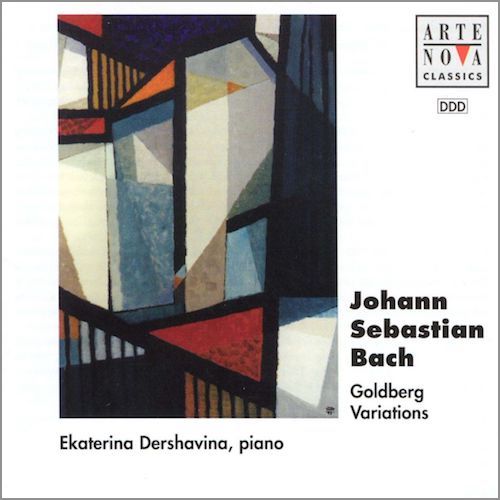
Murray Perahia:
András Schiff (ECM)
Ekaterina Derzhavina
This concludes our definitive guide to the best recordings of Bach’s Goldberg Variations. What did you think about our recommendation for Harpsichord and Piano? Share this guide or tell us in the comments. Also, don’t forget to sign up for our classical music newsletter to be updated once new guides are published.
Cover photo by Geert Pieters on Unsplash
Albums Included with an Apple Music subscription:
Included with an Apple Music subscription:
Latest Classical Music Posts
- Review: Schumann – Complete Symphonies – Dresdner Philharmonie, Janowski
- Review: Mozart – The Sonata Project, Salzburg – Yundi, Piano
- Review: Beethoven – Symphony No. 3 (“Eroica”) – Budapest Festival Orchestra – Iván Fischer
- Conductor Edo de Waart Announces Retirement
- Review: Pergolesi – Stabat Mater, Vivaldi: Nisi Dominus – Patchornik, Engeltjes, PRJCT Amsterdam
- Review: Rachmaninoff for Two – Daniil Trifonov, Sergei Babayan
Read more classical music reviews or visit The Classic Review Amazon store
Follow Us and Comment:
Get our periodic classical music newsletter with our recent reviews, news and beginners guides.
We respect your privacy.


